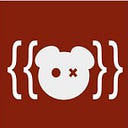FAQs about Ember.js in 2019
Here are some publicly-available resources that answer some of the most common questions about Ember in 2019. Is Ember still around?When will Octane be released? Is it hard to hire Ember devs? etc. Let’s go!
Ember is still around!? What!?
Yes! Ember began in 2011. It has releases roughly every 6 weeks, a core team of about 30 people, annual conferences and meetups all over the world, and in the past calendar year, has shipped an incredible number of features that overhaul the programming model and tooling. Those features will be known as Octane soon (see below).
Ember is used by major companies like LinkedIn, Playstation, Toyota, Princess Cruises, as well as startups and everything in between. Those links above point to information about how each company uses Ember, not just the company’s site itself. There’s a huge list.
What is Octane?
If you haven’t heard, Octane is Ember’s upcoming first Edition. In plain terms, it’s an exciting point where enough features come together that the developer experience and programming model are a new kind of creature. A preview is available today as a canary release (canary is not recommended for production). Check out the preview for the official Quick Start tutorial!
When and how will Octane be released?
EDIT —since all the features are at the finish line, we can say that Octane will be v3.14 of Ember!
Due to the way that releases work in the Ember project, Ember Octane does not have a definitive release date or version. Over the next months, new features destined for Octane will become available in normal, minor releases of Ember. Features that are not backwards-compatible will be released under an optional feature flag. Then, once all the features in the set have made it into stable releases, we’ll label the result “Octane” and update the blueprints for new apps so that they enable the optional features by default.
There are some major benefits to this approach:
- Old apps continue to work, even when updating
- Newly generated apps can make use of all the new features without any extra config work needed
- Many Octane features are already available in the latest release, either directly or through an optional feature flag.
You can read more about this strategy in the RFC. You can follow along with Octane’s progress towards release in this tracking issue, and by reading the Ember Times.
It might seem a little odd at first that there are no target versions/dates for new features. I thought it was strange too, but let’s think through the alternative. If Ember waited to a release until significant new features were “ready,” Ember’s users would miss out on important incremental things like bugfixes or small features. There would be inconsistent gaps of time between releases, meaning that engineering teams who schedule out their upgrading work would have a hard time planning. So instead, Ember publishes a release about ever 6 weeks (give or take). Whatever is ready at the 6-week cadence goes into the release. You can learn more by reading about the train release model in the Ember Blog.
(Thank you to Ricardo Mendes, aka locks, and Katie Gengler for some helpful links and editing!)
Where can I see which new features are available in each Ember release?
The easiest place to look is the Ember Release Blog Posts for each version. If you want more detail, check out the release notes for Ember.js, Ember CLI, and Ember Data. You can learn about Ember’s release cycle in general here.
The Ember Component Cheat sheet by Josh Justice gives a nice summary of Component features!
The Ember Guides do not show all of Ember’s features, just the most commonly-used things for beginners. A new feature might be demonstrated a release or two after its initial debut in the core codebase. So, if you don’t see something in the Guides, it’s not a bad sign! You can see the full supported API surface in the Ember API docs.
Will I have a hard time hiring developers for <insert framework here>?
For the companies I’ve worked for, we hire people who don’t know Ember and it’s not a big deal. Check out my article on How to hire and train developers when you don’t use React.
This question is a common concern of someone considering any framework besides React. Angular, Vue, Ember, etc… we’re all in the same boat, in the sense that these words are more rare on your typical dev resume. However, all four are JavaScript frameworks. They use HTML markup and CSS. The skills are rather transferable. Instead of worrying about whether you will be able to find devs that match your company’s stack, ask yourself the question, what can I do to enable fast onboarding? Using an opinionated framework means that the sample apps and tutorials you find online will be directly applicable to what you’re building. Furthermore, times have changed. Frameworks and the patterns they follow are not new. So, yes, it’s harder to find someone with Ember or whatever on their resume, but it’s fine, in my experience.
How can I get started learning Ember?
I made a whole article just for this! Good luck!
About the author
Jen Weber is web developer and writer based in Boston, USA (she/her or they/them). Jen works at Cardstack, where she helps build tools to power Web 3.0. As a member of the Ember Core Team, she works on code, docs, and contributor engagement for the Ember.js front end framework. She is a fan of open source and making tech a more welcoming, inclusive industry.

